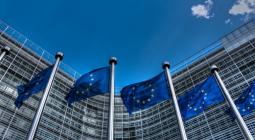LEAKED: Europe’s draft ‘green recovery’ plan.

The European Commission’s promised green recovery plan will focus on building renovation, renewables and hydrogen as well as clean mobility and the circular economy, according to a leaked working document obtained by EURACTIV.
The European Commission is busy putting together a plan to help the EU economy recover from the COVID-19 crisis, preparing to pour at least €1 trillion into a broad stimulus programme expected to be presented next week.
Commission President Ursula von der Leyen outlined the plan to the European Parliament last week, promising to put the Green Deal at the centre of the EU’s recovery effort.
The plan is scheduled to be released on 27 May and although key details on funding are still lacking, some aspects of the plan are now starting to emerge. Yesterday, EURACTIV got hold of a draft presented as “a working document” related to the green aspects of the recovery plan.
The European Commission does not usually comment on drafts. But when contacted by EURACTIV, chief spokesperson Eric Mamer did not immediately deny the document’s authenticity, only urging journalists to “exercise caution” when dealing with alleged leaks.
The document obtained by EURACTIV comes from a trusted source. But it relates only to the green aspects of the recovery plan and does not deal with other crucial parts such as health and finance.
It is divided up into several sections – including building renovation, renewables and hydrogen, and clean mobility – which are summarised below:
BUILDING RENOVATION
The EU “renovation wave” has already been announced for launch in September and will aim to triple the current renovation rate, which stands at around 1% of the building stock.
With the recovery plan, the Commission now wants to achieve “faster and deeper renovation” of buildings, saying it is “a must for a net climate neutral EU and a clear win-win investment priority for a green, digital and fair recovery”.
On the funding side, the Commission plans to launch a “European Renovation Financing Facility”, tentatively financed with €91 billion per annum and blended with other sources of funding to reach €350 billion in investment per year.
Priority will go first to public sector buildings, especially hospitals and schools as well as social housing and other forms of low income dwellings.
For private residential buildings, the facility will support the supply of green mortgages, aiming to mobilise €50 billion in investments to “develop an attractive mass-market financing product for renovation”.
To further support renovation, the Commission also plans to revise its relevant state aid rules by 2021, in order to “provide an enabling framework for public authorities to support high quality renovation”.
RENEWABLES AND HYDROGEN
Although renewable energies have proved more resilient than fossil fuels during the COVID-19 crisis, supply chains have been seriously affected, with solar and wind markets expected to shrink by 20-33% this year, the Commission says.
The recovery plan proposes to focus on renewables and hydrogen in parallel, saying both are needed for deep decarbonisation.
“Without sustained growth of the renewables market, there is no future for clean hydrogen in Europe while sustainable hydrogen technology has a critical role to play in decarbonising the economy,” the document says.
On renewables, key aspects of the recovery plan include:
- An EU tendering scheme for renewable electricity projects worth 15 GW over 2 years, with a total capital investment of €25 billion.
- Support for national schemes with €10 billion over two years, using co-financing by the European Investment Bank (EIB).
For clean hydrogen, the Commission intends to:
- Double the amount of funding for clean hydrogen research and innovation, currently standing at €650 million.
- A further €10 billion over the next ten years – involving co-financing – to “substantially reduce risks” of large and complex projects such as hydrogen.
In order to scale up production of clean hydrogen, the Commission also intends to launch a “1 Million ton of clean hydrogen commitment”.
That will include a “carbon contracts for difference (CCfD)” pilot scheme aimed at supporting production of clean hydrogen. The scheme is “similar to tendering systems for renewable power,” and “could pay the difference between CO2 strike price and actual CO2 price in the ETS” in order to bridge the cost gap between conventional and decarbonised hydrogen”.
A fund worth €10 billion per year, administered by the EIB, would also be set up to grant loans for hydrogen infrastructure.
CLEAN MOBILITY
For the automotive industry, the plan proposes:
- An EU-wide Purchasing Facility for Clean Vehicles, that reduces CO2 and pollutant emissions in line with EU standards. Amount: €20 billion in the next two years.
- A Clean Automotive Investment Fund to accelerate the investments in zero-emission drive trains. Amount: €40-60 billion.
- Doubling EU investment on electric car recharging infrastructure, with the objective of reaching 2 million public charging and alternative refuelling stations by 2025.
For the rail sector:
- A Renaissance of Rail Investment package. focusing on on key corridors where passengers and freight can shift to rail. Amount: €40 billion.
- Financial support for the changeover of the rolling stock, and bring night-train services back into Europe.
The recovery plan also foresees greater funding for urban mobility programmes, such as cycling infrastructure, to be financed under the EU’s regional funding programmes.
A further two sections are dedicated to the circular economy and the farming sector, with a focus on digitalisation.
Green activists worried
As the Commission puts the finishing touches on its recovery plan, some environmentalists expressed worries that the draft gives excessive attention to hydrogen.
“The Commission suggests that gas and renewable energy be used to produce massive amounts of hydrogen, instead of using renewable energy to phase out fossil fuels as quickly as possible,” said Sebastian Mang from Greenpeace.
Mang says EU funds would be better spent on “solutions proven to decrease emissions like decentralised renewable energy, reducing meat and dairy consumption, and increasing use of public transport and bike lanes.”
Environmentalists are also worried that the document is falling short on clean mobility by putting too much emphasis on the car industry. “Public funding of the car industry or airlines must be conditional on phasing out diesel and petrol car sales by 2028, strictly limiting short haul flights, retaining workers and drastically reducing emissions,” says Lorelei Limousin, EU transport advisor at Greenpeace.
Greenpeace also raised questions regarding the Commission’s consultation process. In order to build consensus around its proposals, the EU executive regularly sends draft policy documents to national capitals but also private sector organisations, including civil society groups, trade unions and business associations.
In this case, Mang said it was “surprising that a corporate lobbyist is listed as the document’s author.”
The full working document can be read below or downloaded here.
20 May 2020
Euractiv





